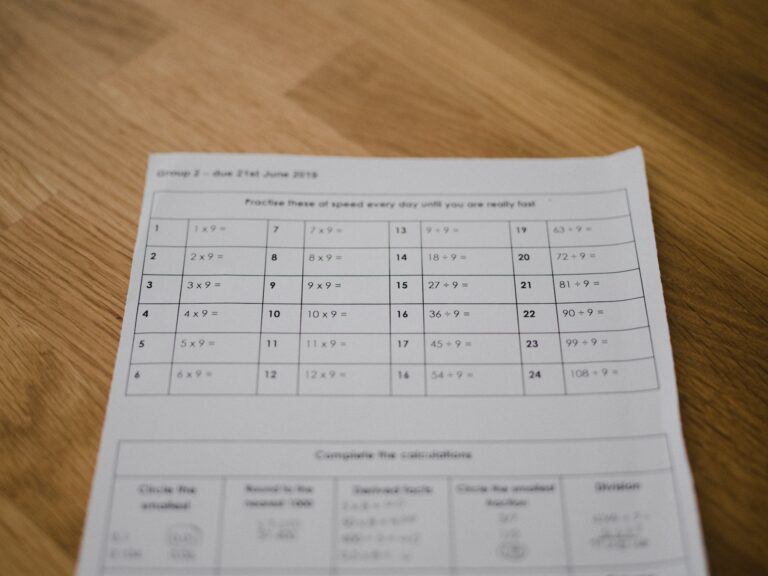Whether you’re a math teacher, homeschooling parent, student, or education enthusiast, probability is a fun and foundational topic that helps students explore logic, data, and chance. Using simple tools like dice, coins, and spinners, you can introduce a wide range of mathematical concepts in an engaging, interactive way.
This guide offers 11 hands-on probability exercises that are ideal for use with FreeOnlineDiceRoller.com. Each activity lists a recommended grade range and offers tips for scaling the difficulty. Whether you’re teaching dice roll probability, exploring random outcomes, or running a simulation, these exercises are sure to roll up the fun and boost learning outcomes.
1. Roll and Record (Grades 4–6)
Objective: Introduce the idea of randomness and frequency.
Instructions:
Use a D6 (six-sided die)
Roll 30 times, record each result
Create a frequency table
Extension: Convert the frequency into fractions and percentages.
Make it easier: Use fewer rolls and focus only on counting occurrences.
Make it harder: Compare student results to theoretical probability.
Downloadable PDF: Worksheet_1_Roll_and_Record
2. Predict the Outcome (Grades 5–7)
Objective: Compare predictions with experimental results.
Instructions:
Ask students to predict how often each number will occur in 60 rolls
Roll using FreeOnlineDiceRoller.com
Compare predictions to actual outcomes
Make it easier: Reduce roll count and guide prediction with theoretical probability.
Make it harder: Discuss sample size and variance.
Downloadable PDF: Worksheet_2_Predict_the_Outcome
3. Two Dice, One Sum (Grades 6–8)
Objective: Explore compound outcomes.
Instructions:
Roll two D6s simultaneously
Record sum of both dice for 100 rolls
Create a histogram of the results
Why it works: Students see that some sums (like 7) appear more frequently.
Make it easier: Focus only on identifying highest/lowest frequency.
Make it harder: Calculate theoretical probabilities using combinations.
Downloadable PDF: Worksheet_3_Two_Dice_One_Sum
4. Dice Graph Challenge (Grades 6–8)
Objective: Turn data into visual insight.
Instructions:
Roll a D8 or D10 50 times
Record frequency and create a bar graph
Make it easier: Pre-draw the graph axes.
Make it harder: Graph using digital tools like Excel or Google Sheets.
Downloadable PDF: Worksheet_4_Dice_Graph_Challenge
5. Game of Risk (Grades 7–9)
Objective: Introduce expected value and strategic decision-making.
Scenario: Rolling a 1 ends your turn. Rolling 2-6 lets you move forward 1 space. Students must decide whether to risk another roll.
Instructions:
Simulate 50 turns
Record total moves per strategy
Analyze outcomes
Make it easier: Provide move tracking sheets.
Make it harder: Allow different rules (e.g., roll a D20).
Downloadable PDF: Worksheet_5_Game_of_Risk
6. Fair vs. Unfair Dice (Grades 7–10)
Objective: Explore ethics and probability.
Instructions:
Use a “loaded” die (pre-set outcomes) or simulate using biased values
Compare outcomes vs. fair die
Discussion: What makes a game fair?
Make it easier: Provide data samples.
Make it harder: Introduce weighted probability.
Downloadable PDF: Worksheet_6_Fair_vs_Unfair_Dice
7. Custom Dice Lab (Grades 8–10)
Objective: Experiment with probability design.
Instructions:
Design a custom six-sided die (not 1-6)
Roll and compare to standard die
Make it easier: Pre-select outcomes
Make it harder: Add point values to faces
Downloadable PDF: Worksheet_7_Custom_Dice_Lab
8. Probability Word Problems (Grades 6–9)
Objective: Apply probability to real-world logic problems.
Example Problem: “You roll two dice. What is the chance both land on even numbers?”
Make it easier: Use single-die problems.
Make it harder: Use combinations and conditional probability.
Downloadable PDF: Worksheet_8_Probability_Word_Problems
9. Experimental vs. Theoretical (Grades 6–9)
Objective: Compare expected outcomes to real results.
Instructions:
Calculate expected frequencies for D6
Roll 100 times
Compare and analyze differences
Make it easier: Roll fewer times.
Make it harder: Calculate standard deviation.
Downloadable PDF: Worksheet_9_Experimental_vs_Theoretical
10. Dice Probability Game Design (Grades 9–12)
Objective: Use probability to design a game.
Instructions:
Create a board game or RPG mechanic using dice
Include win conditions, scoring, and probability balancing
Make it easier: Use templates or examples.
Make it harder: Present to the class or write a probability justification.
Downloadable PDF: Worksheet_10_Dice_Probability_Game_Design
11. Strategic Rolling (Grades 9–12)
Objective: Learn probability trees and outcomes.
Scenario: Students choose how many dice to roll. If they roll at least one 6, they win.
Instructions:
Create a probability tree for 1, 2, and 3 dice
Determine best strategy
Make it easier: Use visuals and only 2 options.
Make it harder: Add more conditions or use D10s.
Downloadable PDF: Worksheet_11_Strategic_Rolling
Closing Thoughts
Teaching probability doesn’t require fancy tools or expensive curriculum. With nothing more than paper and a good online dice roller, you can bring rich mathematical concepts to life. These exercises are more than just fun classroom activities—they’re a gateway into logic, decision-making, and real-world thinking.
And be sure to explore other resources, games, and tools on FreeOnlineDiceRoller.com to roll your way to math mastery!

